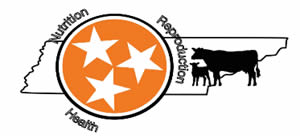

Recovery from the Breeding Season is the start of the Next Breeding Season
By: J.T. Watts and K.J. McLean

For over 45% of cow-calf producers, the fall season is a time focused on weaning and herd preparation for the winter months (USDA, 2010). One important area that tends to be overlooked is bull recovery following the physical stress and high activity of the breeding season. This physical stress can lead to body weight (BW) loss, conformation issues, damaging changes to reproductive organs, alterations in hormone balance, and other physiological changes. Many of these consequences can negatively influence reproductive soundness of bulls (Lee, 1993; Tilbrook, 2009). Some bulls who pass a Breeding Soundness Exam (BSE) prior to the breeding season may fail a BSE after the breeding season (Ellis, 2005). The extreme stress from the breeding season can also initiate an immune response, which can influence physiological changes in the bull (Tilbrook, 2009). When immune response pathways are activated in cattle, nutrient absorption, behavior, and the release of signaling proteins, specifically cytokines, are influenced in ways that could impact the reproductive efficiency of the bull (Colditz, 2002). Our group has shown that nutritional plane and energy reserves or body condition score (BCS), can impact cytokines in seminal plasma, potentially impacting reproductive health (Harrison et al., 2021).
Following the breeding season, bull recovery should focus on BW gain and return to BCS ideal (Herd, 1986) and adjustment to the recently reduced activity level. Insufficient nutrient intake has negative effects on bull health; however, excessive nutrient intake can have similar or larger negative impacts on the bull (Skinner, 1981; Harrison et al., 2021). Thus, it is vital to provide feed in quantities sufficient for proper BW gain without causing obesity. Cool season forages like tall fescue provide a source for BW and BCS gain with limited inputs throughout much of the pastureland in the Southeast during this time (i.e. September and October). However, most breeding seasons end in August and, thus, bull recovery may require some supplementation on the poor-quality forage. Maintaining the same level of supplementation as when forage quantity and quality are low can create an over-conditioning scenario once cool-season forage quantity and quality increases going into fall. If plane of nutrition is not carefully managed, factors such as sperm production and seminal plasma content can be detrimentally affected by the rise and fall of BCS throughout the year. (Foote, 1978; Harrison et al., 2021; Tabler, 2004). This can stimulate a fluctuating BW and BCS, which can cause persistent reductions in reproductive performance. Therefore, bull recovery should focus on BW gain and BCS recovery to pre-breeding levels without over-conditioning and maintaining this throughout the less active times of the year to minimize the need for major adjustment for the next breeding season. For animals, like bulls, that have a large impact during a short amount of time the end of one breeding season begin the preparation for the next.